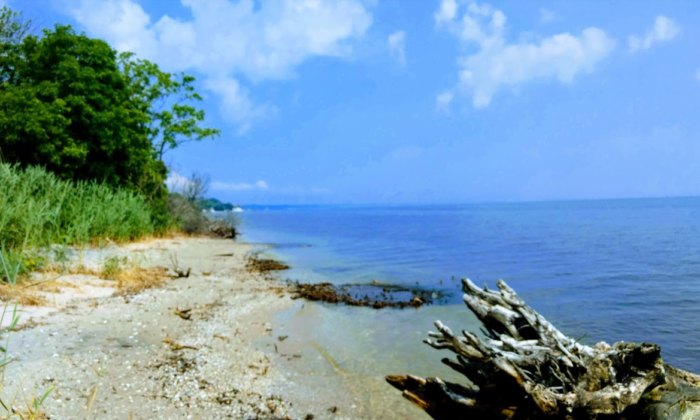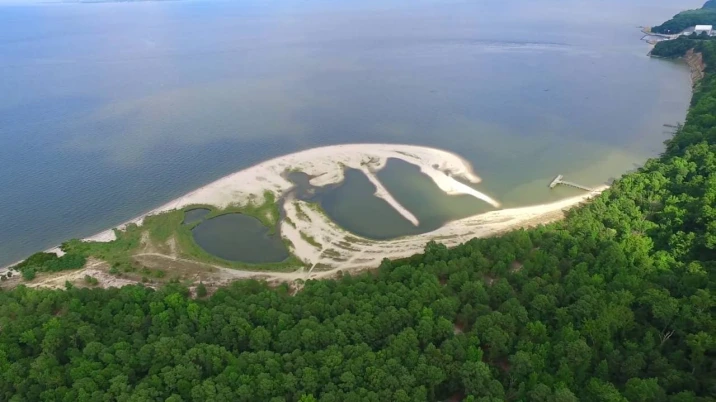Maryland Parks Association Recognizes Student Projects Focused on Environmental Management

The Maryland Recreation and Parks Association recently recognized two solution-driven projects undertaken by University of Maryland Global Campus (UMGC) students with public service awards.
Both of the initiatives, which were capstone projects for students in the Environmental Management Master’s Degree Program, made recommendations for nature areas in Calvert County.
“The partnership was really important to me because we were being able to use the skills of the people in the classes to look at some issues that we have and then be able to come up with the recommendations,” said Karyn Molines, chief of the Natural Resources Division for the Calvert County Department of Parks and Recreation. “They helped us eliminate a step in these projects, which saved us a lot of money. That money can be used for other work.”
One project assessed storm water management at the Battle Creek Cypress Swamp Sanctuary in Prince Frederick. The county is moving forward on the recommendations generated by the five-student team, noting that they could save the county more than $30,000.

Flag Ponds Nature Park
The second project offered an analysis on building a sustainable beach shelter for education programs and visitors at Flag Ponds Nature Park in Lusby. The students were praised for the creative ideas they presented, but the county found that state and federal regulations made the project infeasible.
Molines said she is working on new projects she hopes UMGC students will help to produce.
Like many UMGC masters programs, the environmental management program emphasizes practical projects to augment theoretical learning. In place of a master’s thesis, teams of students work together on capstone projects that require an analysis or examine a problem. They must complete the work within a 12-week course.
Many of the students already are working in environmental management, and they come with a wealth of experience, said Dan Grosse, who teaches the capstone classes. Students with expertise in the field are often paired with less experienced students.
“The amount these working adult students can teach one another is truly phenomenal,” Grosse said.
Nadean Carson, for example, had five years’ experience in civil engineering with the Air Force. She worked on environmental and construction projects after graduating from Embry-Riddle Aeronautical University. She was assigned to the same UMGC team as Peter Holland, a Towson University graduate in sociology. Holland had decided to move into the environmental field and realized he needed a graduate degree to advance to the next level. Like many UMGC students, he is progressing slowly through the program as he dovetails the academic work with a schedule that also includes his paying job and family responsibilities.
Most of the students’ work was done virtually during the COVID-19 epidemic, although one member of Battle Creek Sanctuary team lived in the same town as the sanctuary and was able to visit the site. The use of topographical maps underpinned the project, the students said, but having Andrea Gibbons at the park during a rainstorm was a big plus.
“She was taking videos. She took pictures,” Holland said. “Seeing the water running down, Andrea was able to see firsthand the problem areas we were discussing and the heavy erosion.”
The project broke the work into phases so the county could advance on it as it got the money, Carson said. The project fit right into the type of work she does professionally.
“This was fantastic for me,” she said. “I did a little happy dance when we got the assignment.”
Natalie Oryshkewych was the team leader on the Flag Ponds Nature Park project. With 25 years of experience at the Ohio Environmental Protection Agency, she brought a wealth of knowledge to the team. Her team was located in two time zones and had to learn quickly to work together in order to meet the capstone deadline.
Even though the shelter will not be built, the team had the satisfaction of knowing that its work saved Calvert County from investing time and money into its own analysis.
Oryshkewych said the capstone project also gave her a new appreciation for her job with the Ohio EPA.
“It helped me see the agency that I work for in a more holistic manner, so it wasn’t just what I do from a day-to-day perspective,” she said. “It gave me a better understanding of what my agency does as a whole and how it contends with all of the regulatory programs.”
Share This